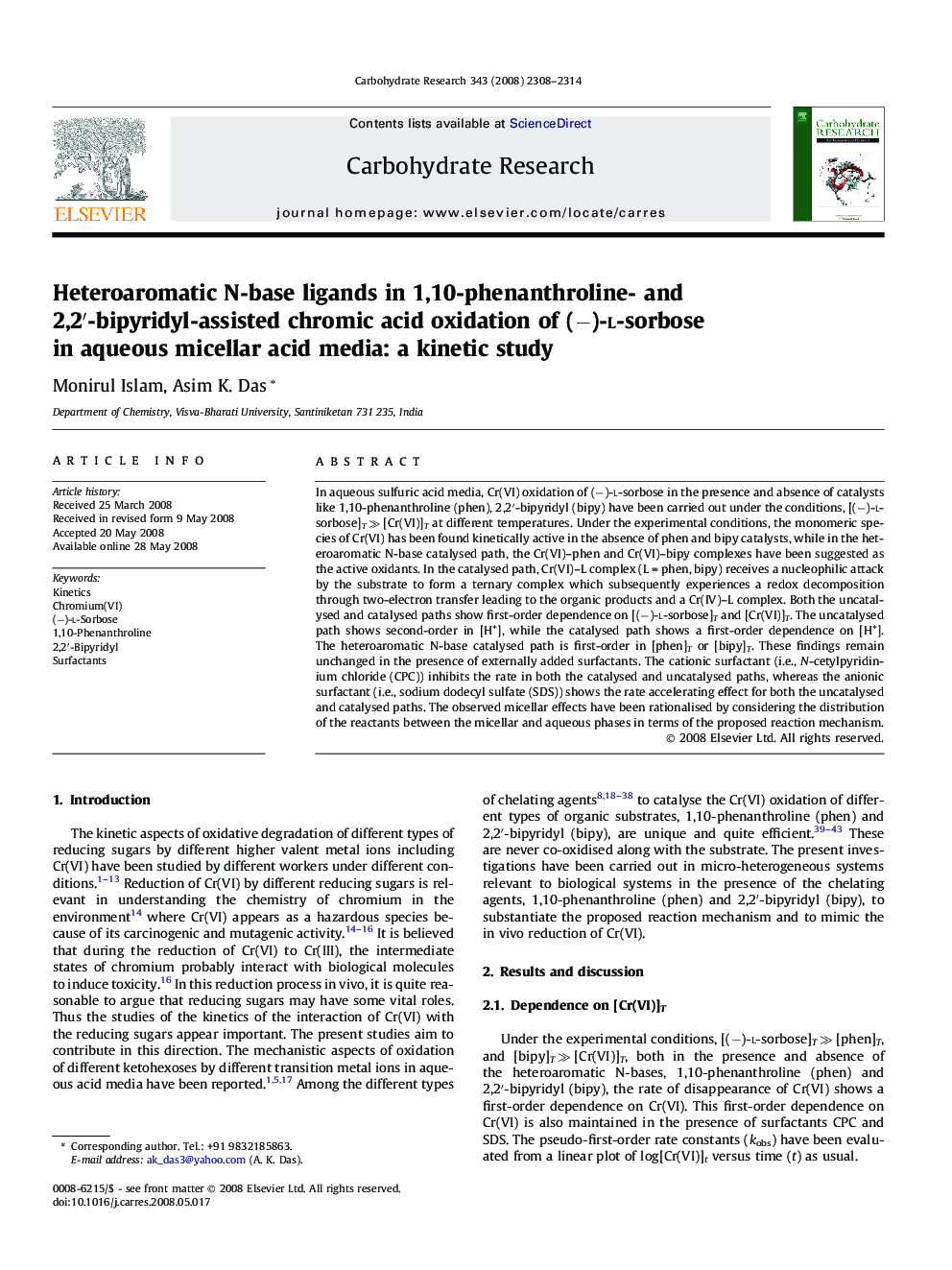| کد مقاله | کد نشریه | سال انتشار | مقاله انگلیسی | نسخه تمام متن |
|---|---|---|---|---|
| 1385230 | 982437 | 2008 | 7 صفحه PDF | دانلود رایگان |
عنوان انگلیسی مقاله ISI
Heteroaromatic N-base ligands in 1,10-phenanthroline- and 2,2â²-bipyridyl-assisted chromic acid oxidation of (â)-l-sorbose in aqueous micellar acid media: a kinetic study
دانلود مقاله + سفارش ترجمه
دانلود مقاله ISI انگلیسی
رایگان برای ایرانیان
کلمات کلیدی
موضوعات مرتبط
مهندسی و علوم پایه
شیمی
شیمی آلی
پیش نمایش صفحه اول مقاله

چکیده انگلیسی
In aqueous sulfuric acid media, Cr(VI) oxidation of (â)-l-sorbose in the presence and absence of catalysts like 1,10-phenanthroline (phen), 2,2â²-bipyridyl (bipy) have been carried out under the conditions, [(â)-l-sorbose]TÂ â«Â [Cr(VI)]T at different temperatures. Under the experimental conditions, the monomeric species of Cr(VI) has been found kinetically active in the absence of phen and bipy catalysts, while in the heteroaromatic N-base catalysed path, the Cr(VI)-phen and Cr(VI)-bipy complexes have been suggested as the active oxidants. In the catalysed path, Cr(VI)-L complex (LÂ =Â phen, bipy) receives a nucleophilic attack by the substrate to form a ternary complex which subsequently experiences a redox decomposition through two-electron transfer leading to the organic products and a Cr(IV)-L complex. Both the uncatalysed and catalysed paths show first-order dependence on [(â)-l-sorbose]T and [Cr(VI)]T. The uncatalysed path shows second-order in [H+], while the catalysed path shows a first-order dependence on [H+]. The heteroaromatic N-base catalysed path is first-order in [phen]T or [bipy]T. These findings remain unchanged in the presence of externally added surfactants. The cationic surfactant (i.e., N-cetylpyridinium chloride (CPC)) inhibits the rate in both the catalysed and uncatalysed paths, whereas the anionic surfactant (i.e., sodium dodecyl sulfate (SDS)) shows the rate accelerating effect for both the uncatalysed and catalysed paths. The observed micellar effects have been rationalised by considering the distribution of the reactants between the micellar and aqueous phases in terms of the proposed reaction mechanism.
ناشر
Database: Elsevier - ScienceDirect (ساینس دایرکت)
Journal: Carbohydrate Research - Volume 343, Issue 13, 8 September 2008, Pages 2308-2314
Journal: Carbohydrate Research - Volume 343, Issue 13, 8 September 2008, Pages 2308-2314
نویسندگان
Monirul Islam, Asim K. Das,